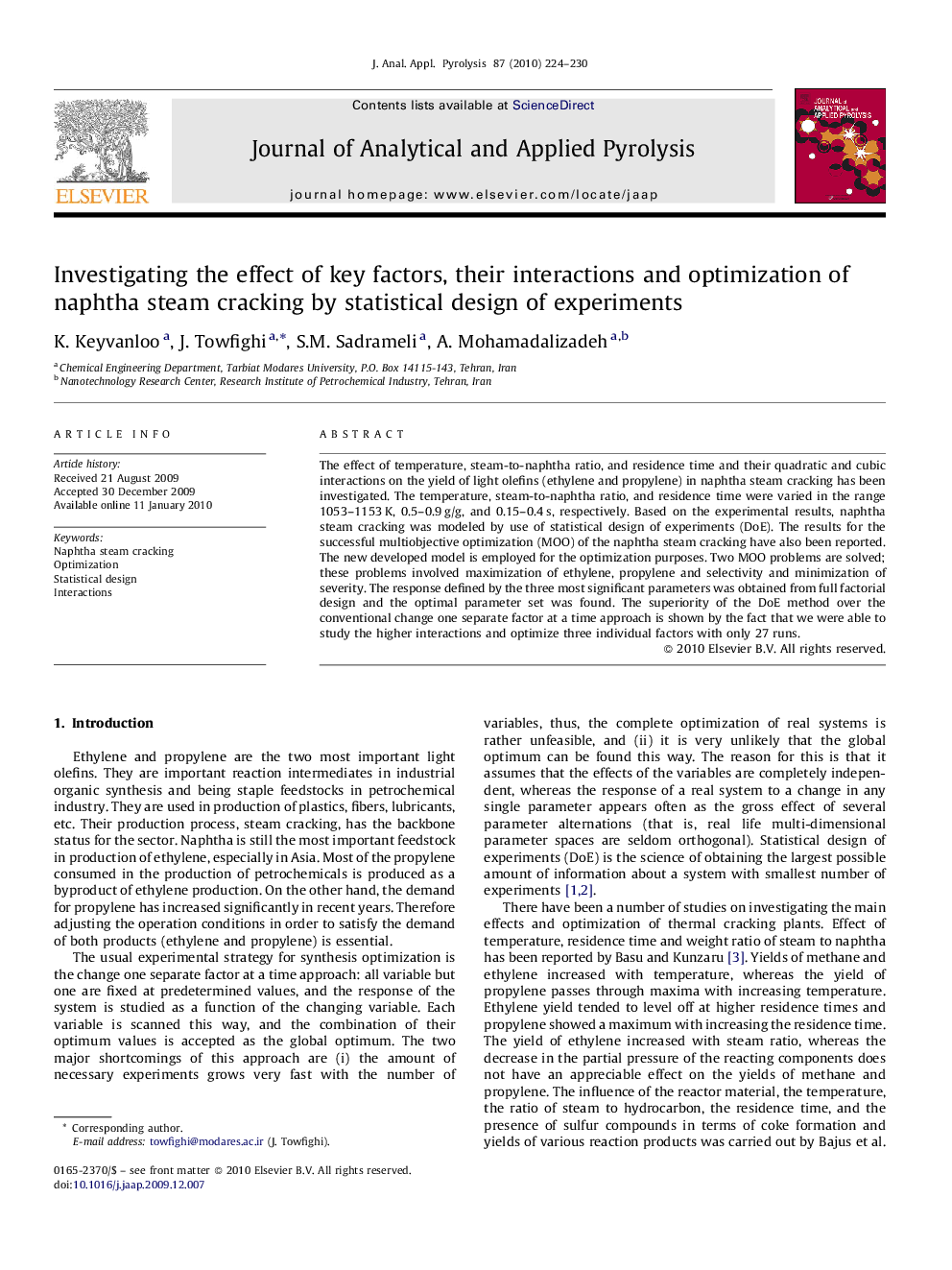| Article ID | Journal | Published Year | Pages | File Type |
|---|---|---|---|---|
| 1197711 | Journal of Analytical and Applied Pyrolysis | 2010 | 7 Pages |
The effect of temperature, steam-to-naphtha ratio, and residence time and their quadratic and cubic interactions on the yield of light olefins (ethylene and propylene) in naphtha steam cracking has been investigated. The temperature, steam-to-naphtha ratio, and residence time were varied in the range 1053–1153 K, 0.5–0.9 g/g, and 0.15–0.4 s, respectively. Based on the experimental results, naphtha steam cracking was modeled by use of statistical design of experiments (DoE). The results for the successful multiobjective optimization (MOO) of the naphtha steam cracking have also been reported. The new developed model is employed for the optimization purposes. Two MOO problems are solved; these problems involved maximization of ethylene, propylene and selectivity and minimization of severity. The response defined by the three most significant parameters was obtained from full factorial design and the optimal parameter set was found. The superiority of the DoE method over the conventional change one separate factor at a time approach is shown by the fact that we were able to study the higher interactions and optimize three individual factors with only 27 runs.
